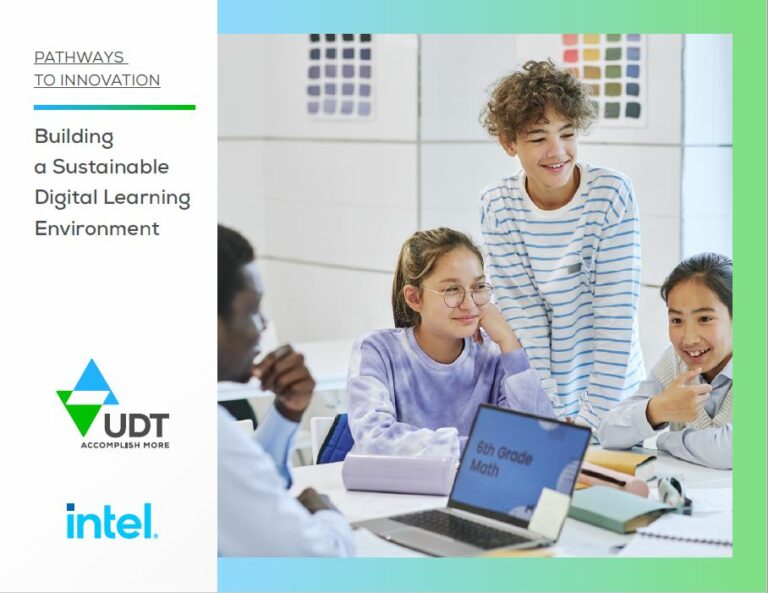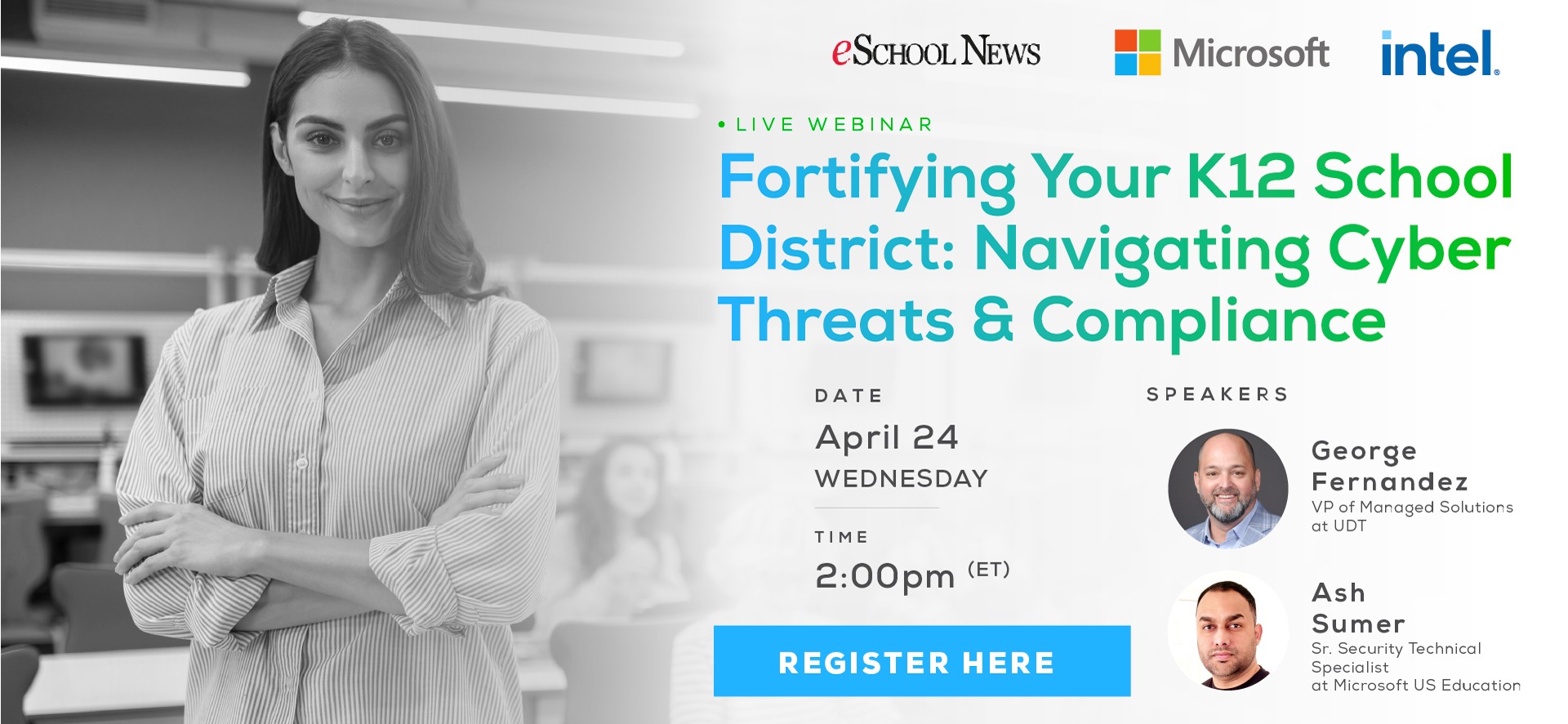As K12 education continues to evolve post-pandemic, school districts and their IT departments are facing the critical task of managing robust 1:1 device programs effectively. These initiatives, which provide each student with a personal computing device, play a pivotal role in modern education. Ensuring success, however, requires more than just distributing devices—it demands strategic planning, communications to key stakeholders such as school board members, foresight, and a holistic approach to device management that spans cybersecurity, support, and repair.
With the rise of digital learning, the functionality of 1:1 devices has become even more critical. They are no longer just tools for accessing information, but also platforms for interactive, core learning experiences integrated within the overall learning environment. Moreover, with the increasing availability of Internet access, these devices are able to facilitate a more connected and collaborative approach to teaching and learning that has changed the landscape of education.
Of course, the biggest hurdle to 1:1 device programs continues to be funding, even more so now that ESSER funds are sunsetting. Budgeting your device refresh program costs must then be done effectively in order to optimize the ROI from your investment, giving you the most longevity for your devices. To help you refine your 1:1 program budget, our experts have pulled together key considerations for cost-effectiveness when planning.
Unlock your pathway to innovation with our guide.
Building 1:1 digital learning environments is a complex journey. To help you achieve the best outcomes, UDT & Intel have collaborated to gather key insights from seasoned CIOs, CTOs, educational leaders, and educators. Here’s what you’ll gain:
- Personalized workbook to help you identify target areas to improve your 1:1 programs
- A student-centered, decision-making Framework covering 6 key focus areas
- A self-assessment to guide your journey
- Details on how to create your custom action plan
- And more!
Download your free copy now to start developing your personalized action plan.
The Importance of a Refresh Strategy
If you find yourself in front of your school board needing to explain why you need budget for a device refresh, here are a few reasons you can speak to:.
1. Technological Advancements: The pace of technological advancements in any industry is relentless, and Education is no different. To keep up, school districts must proactively update hardware and software to leverage the latest features and capabilities before devices become inadequate.
For instance, laptops—probably the most common choice for student devices—are continually being updated with new features and capabilities, leaving earlier models of these devices out of date. This refresh cycle is particularly important when considering the lifespan of your current devices. It’s crucial for schools to stay abreast of these developments and incorporate new devices into their refresh strategy in order to avoid functionality issues and best prepare students for digital literacy.
2. Curriculum Demands: As curricula evolve, so do the requirements for Education Technology (EdTech). Your device refresh strategy should ensure that devices align with changing instructional needs. This is particularly relevant for K12 schools, where curricula can vary significantly across different grade levels, subjects, and ability levels.
For example, high school students will require different device specifications than middle school or elementary school students. In addition, ongoing professional development for educators is essential for ensuring they are equipped to integrate the appropriate technological tools for these different student persona groups to empower their teaching strategies.
3. Cybersecurity Measures: Protecting student data and privacy is paramount. In a rapidly changing threat landscape, successfully preventing sophisticated cyber attacks is critical but requires a rigorous risk management strategy. Regular refreshes allow districts to implement robust security measures and stay ahead of evolving threats.
For example, cyber criminals are always trying new tactics to breach your systems and steal your data. Having out of date technology may provide an open door for cyber criminals.
Ultimately, a well-executed refresh strategy is essential for maintaining the vitality and relevance of your 1:1 device program.
A Note on Timing Your Refresh
Timing your device refresh correctly is also critical for success. The start of a new school year is usually an ideal time to roll out new devices, as it allows for a fresh start and minimizes disruption to the learning process. This is also an excellent opportunity to introduce new technology that can further enhance learning.
The beginning of the academic year is also a peak time for enrollment, making it an opportune moment to introduce students to your 1:1 program benefits and best practices. This is especially true for public schools, where the influx of new students can be significant. It’s also a crucial time to consider the lifecycle of devices across your fleet, ensuring they remain up-to-date and functional throughout the academic year.
Balancing the Hard and Soft Costs of Your Device Refresh
When planning a refresh strategy, districts must consider both hard and soft costs. Hard costs typically make up around 30% of your device refresh cost of ownership over a 5-year period, encompassing tangible expenses directly associated with acquiring and maintaining your devices. Your soft costs will make up the remaining 70% of your device refresh budget. Often overlooked, these costs significantly impact the success of your 1:1 device initiative, affecting the longevity of your devices, performance, security, and more.
Examples of Hard Costs
- Device and Refresh Rates: The initial purchase cost and the frequency of device replacements.
- Accessories: Chargers, cases, and other peripherals.
- Maintenance and Repairs: Services required for keeping devices in optimal condition.
- Software Licensing: Licensing fees for education software and applications.
- Deployment and Management Tools: Systems for device provisioning and management.
- Warranties: Coverage against defects and damage.
Examples of Soft Costs
- Training: The ongoing training for educators required to maximize device utilization.
- Device Management and Configuration: Labor costs associated with configuring and managing devices.
- Infrastructure and Connectivity: Costs associated with network upgrades, Wi-Fi access points, and Internet bandwidth.
- 3rd-Party Software: Special licenses for additional software that falls beyond the core curriculum.
- Future-Ready Capabilities: Costs associated with anticipating future needs and scalability, including professional planning for the integration of future new devices, which could offer enhanced digital learning experiences and improved functionality.
The Hidden Impact of Soft Costs
Soft costs deserve careful consideration. While hard costs are quantifiable, soft costs can significantly affect daily operations and budgets. IT professionals often overlook these indirect expenses during initial assessments, leading to suboptimal decision-making and unpredictable expenses down the road (think about the break/fix cost challenges that plague Education).
Key Considerations for Your School District
As you refine your 1:1 device program, you should keep the following key considerations in mind, which can clarify the budget allocations within your device refresh plan:
- Categorized Refresh Strategy: Do you categorize device refreshes based on device type and usage? How are you factoring in the different aspects of your hard costs, such as your support program, accessories, and licensing?
- Specialized Programs: Are there specialized learning programs (i.e. Career and Technology Labs, E-Sports, Production, etc.) that require more frequent updates within your district?
- Soft Costs Awareness: Have you factored in the soft costs associated with your technology initiative, including connectivity, device management, training, and planning costs?
- Workflow Impact: How will a refresh initiative impact existing workflows and processes? Have you planned for necessary changes and training? Also, consider how the introduction of new devices might affect these workflows and processes.
Remember, a well-informed refresh strategy ensures that your 1:1 initiative remains a dynamic force in advancing student learning outcomes well into the future. By considering factors such as the timing of the school year, the types of devices used, and the potential impact of new devices, you can ensure that your program continues to meet the needs of your students and educators while optimizing your device refresh budget. Getting this right is particularly important in a digital learning environment where device functionality and the quality of learning experiences can significantly influence enrollment and student success.
With decades of experience supporting a majority of the 10 largest school districts in the US, UDT is a trusted partner for educational institutions that need to optimize limited funding to support their 1:1 device initiatives. UDT can provide customized solutions, expert guidance, and ongoing support to help you achieve your goals while protecting and empowering your students and staff.
If you are interested in learning more about how UDT can help your school district, please contact us to schedule a consultation.

